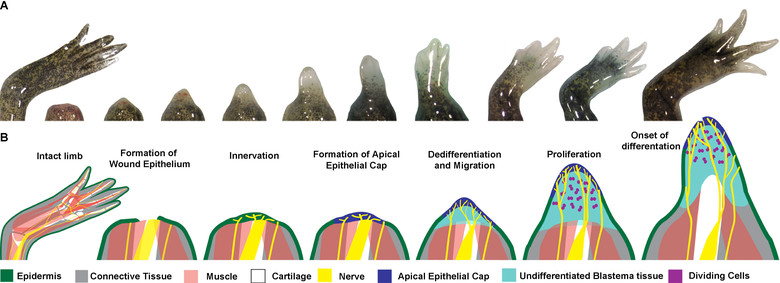
SCIENCE COOKIES
Science articles with chocolate chips
The axolotl: A surprising amphibian.
Published: 27/7/2021
Author: Andrea Garma
Brief introduction to axolotls.
The axolotls, ambystoma mexicanum, are endemic salamanders from Xochimilco (a demarcation of Mexico City). They stand out from other salamanders as they live with a condition called neoteny (preservation of larval characteristics, such as their tadpole-like dorsal fin). However, in special cases, an axolotl can reach maturity and emerge from the water. In addition to being extremely adorable, they are not as small as you might think, since they can reach 15 to 30 cm in length, and live up to 15 years. At present, axolotls are under the category of "Critically Endangered" on the IUCN Red List, with a currently declining population trend.
Amazing skills.
Beyond the data mentioned in the brief introduction to axolotls, these animals stand out for their fascinating regenerative abilities, which is why they have become the favorite amphibian of the current scientific community. The Axolotl can regenerate from severed limbs, wounds, organs, tissues even its spinal cord, brain, eyes and heart, and all of the above without leaving scars!

The regenerative process of a limb amputation would take an axolotl just a few weeks to complete, forming epithelium, bones, muscles, nerves, skin, absolutely everything. They are even able to treat their spinal cord and make it function as if there is no harm at all.
How do they do that?
The answer to this question is somewhat complicated. Naturally, the reason is hidden in its DNA, however, the axolotl has 32,000 million base pairs of DNA, this is 10 times more than the human genome. However, last year, Melissa Keinath fellow from the Baltimor Institute for Sciences, in conjunction with a research team, was able to perform an astonishing genetic mapping of more than 100,000 parts of DNA, which they compared with genetic material from tiger salamanders -the closest relative of axolotls- and in this way, it was possible to glimpse which sequences were typical of smiling amphibians, among them, it was revealed that 25 genes are suspected to be related to tissue regeneration.
It was also discovered that an important element in the regeneration of axolotls is the reactive oxygen species (ROS), small molecules that are naturally formed due to oxygen metabolism.
We hope this article has been to your liking and that science will soon be able to find more answers about the incredible abilities of this charming animal. Until that happens… Keep feeding your brain more Science Cookies!
References
https://pubmed.ncbi.nlm.nih.gov/33675804/
https://www.bbc.com/mundo/noticias-42918181
https://www.nationalgeographic.es/animales/ajolote
https://www.nature.com/articles/s41598-018-36209-2





